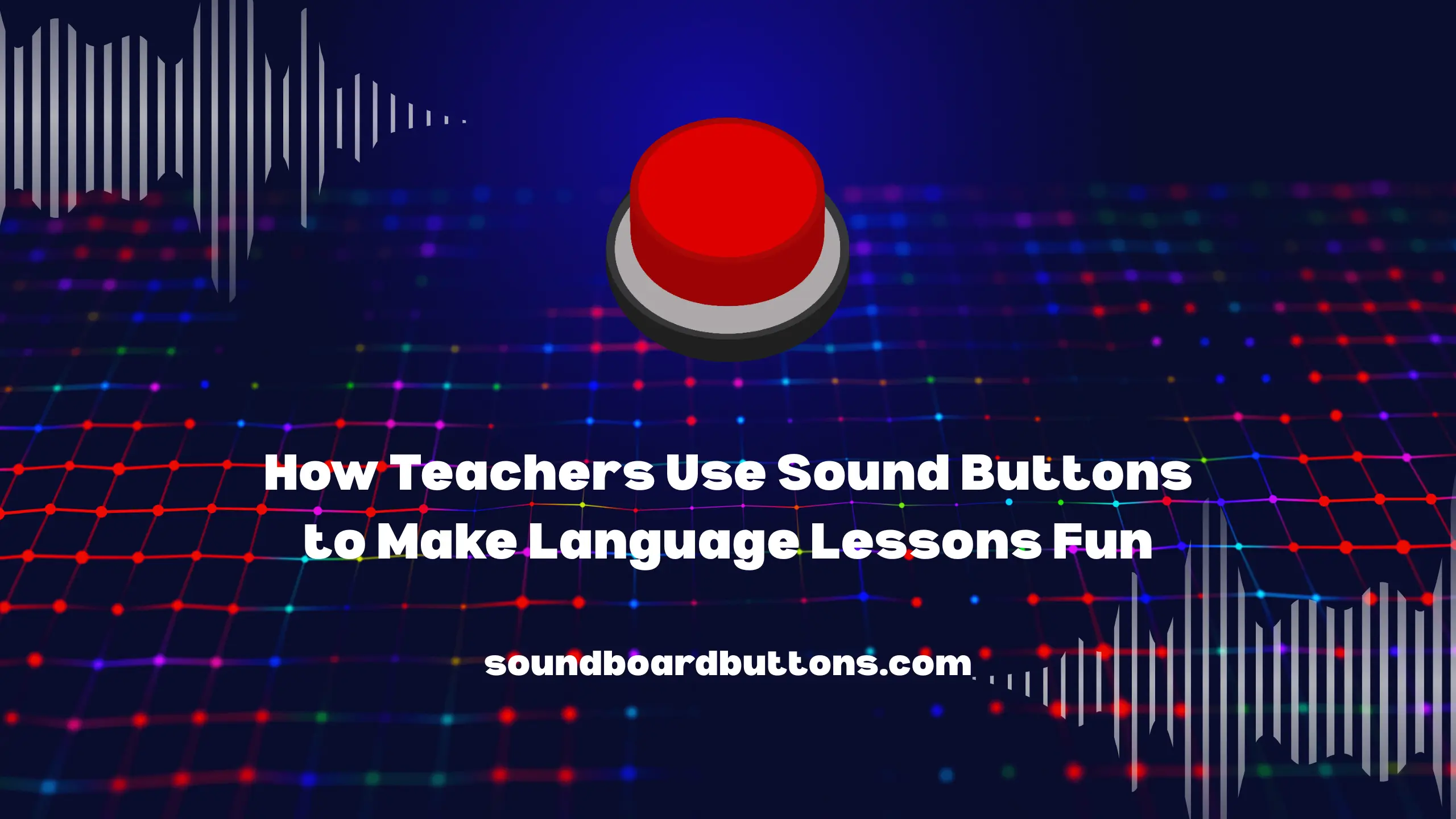Teaching a new language requires engaging methods that keep students interested while reinforcing learning. Sound buttons have become a popular tool in classrooms, offering an interactive way to practice pronunciation, build vocabulary, and enhance listening skills.
These simple yet effective devices provide immediate auditory feedback, making lessons more dynamic and enjoyable for students of all ages.
What Are Sound Buttons and How Do They Work?
Sound buttons are small devices or digital tools that play pre-recorded audio clips when pressed. They can be physical buttons placed around the classroom or digital versions integrated into interactive whiteboards, tablets, and language learning apps. These buttons allow teachers to record words, phrases, or sentences, helping students associate sounds with their meanings.
By incorporating sound buttons into lessons, teachers create an engaging, multisensory learning experience. Students listen, repeat, and interact with the sounds, reinforcing correct pronunciation and language patterns enjoyably.
How Sound Buttons Improve Language Learning
Sound buttons enhance language learning by providing immediate auditory feedback, helping students refine pronunciation and build confidence. They reinforce vocabulary through repetition, making it easier to retain new words. This is how by catering to different learning styles, these tools create an interactive and engaging environment that improves listening, speaking, and comprehension skills:
Enhancing Pronunciation Through Immediate Feedback
One of the biggest challenges in learning a new language is mastering pronunciation. Sound buttons help students hear the correct pronunciation instantly, allowing them to practice and self-correct. By repeatedly listening and mimicking the sounds, students develop better speaking skills and gain confidence.
Building Vocabulary with Interactive Learning
Learning new words is easier when students can hear them in context. Sound buttons enable teachers to record individual words, phrases, or entire sentences. When students press a button, they hear the word spoken clearly, reinforcing both recognition and recall. This method is particularly useful for younger learners or those struggling with new vocabulary.
Encouraging Active Participation in the Classroom
Passive learning often leads to boredom and disengagement. With sound buttons, students take an active role in their learning by pressing buttons, listening to words, and responding accordingly. This hands-on approach increases participation and makes learning more enjoyable.
How Teachers Use Sound Buttons in Language Lessons
Teachers integrate sound buttons into language lessons by using them for pronunciation practice, vocabulary building, and listening exercises. These tools create interactive learning experiences, allowing students to engage with spoken language in a fun and effective way. This is how by incorporating sound buttons, educators enhance student participation and improve retention:
Creating an Interactive Word Wall
Teachers can place sound buttons on a word wall where students press them to hear correct pronunciations. This makes word recognition fun and reinforces learning without requiring constant teacher intervention.
Integrating Sound Buttons in Storytelling Activities
In language lessons, storytelling helps students understand sentence structures and new vocabulary. Teachers record key parts of a story onto sound buttons, allowing students to press them at the right moments to hear the narration. This interactive approach enhances comprehension and makes stories more engaging.
Sound Buttons for Listening Comprehension Exercises
Listening comprehension is a key component of language learning. Teachers can record questions or phrases onto sound buttons, and students respond based on what they hear. This method improves listening skills and prepares students for real-world conversations.
Gamifying Lessons with Sound Buttons
Gamifying lessons with sound buttons makes learning more enjoyable and interactive. As technology advances, digital sound buttons offer even more ways to enhance language learning, providing teachers with flexible and customizable tools:
- Matching games, where students press buttons to hear words and match them to images.
- Role-playing exercises, where students press buttons to hear dialogue and respond accordingly.
- Pronunciation challenges, where students record their voices and compare them to the correct pronunciation.
How Digital Sound Buttons Enhance Learning
With technology advancing, digital sound buttons are now available in interactive apps and classroom software. These tools allow teachers to customize lessons with recorded speech, sound effects, and automated quizzes. Digital buttons are especially useful in virtual learning environments, ensuring students still receive auditory reinforcement even outside the classroom.
What are the Benefits of Using Sound Buttons in Language Lessons
Students often hesitate to speak in a new language due to the fear of making mistakes. Sound buttons create a pressure-free environment where they can practice pronunciation and speech patterns at their own pace. By allowing repeated attempts, these tools help learners refine their pronunciation and develop confidence in their speaking abilities. Over time, students feel more comfortable expressing themselves without worrying about errors.
Hearing a word multiple times strengthens memory retention, making it easier to recall during conversations. Sound buttons provide repeated exposure to correct pronunciation, helping students internalize new vocabulary naturally. Since learners can listen and repeat as often as needed, they reinforce their understanding of words and phrases more effectively. This method ensures long-term retention and a deeper connection with the language.
Final Thoughts
Sound buttons have transformed language learning by making lessons more interactive, engaging, and effective. Whether used for pronunciation practice, vocabulary building, or listening exercises, these tools create a dynamic classroom environment where students feel confident and motivated. With the rise of digital sound buttons, educators now have even more flexible options to enhance learning both in-person and online.
